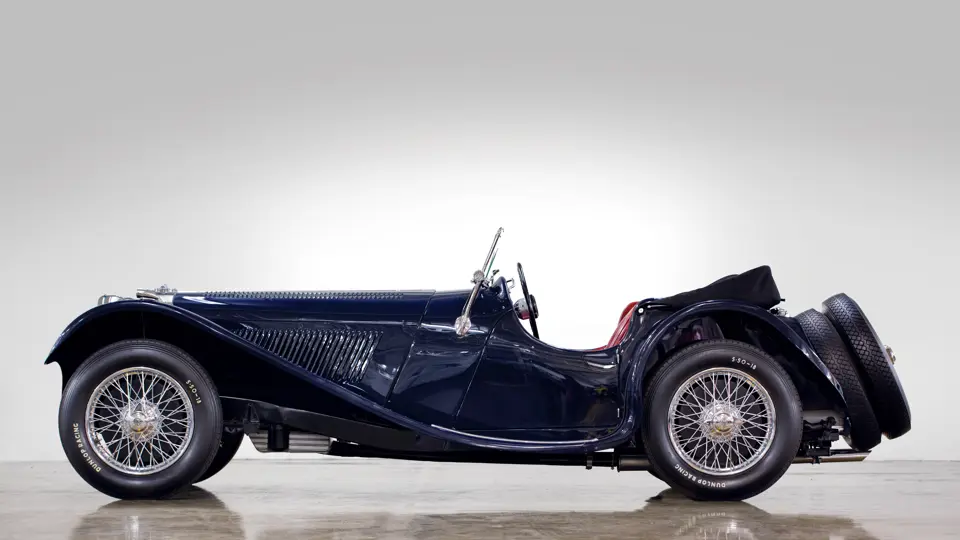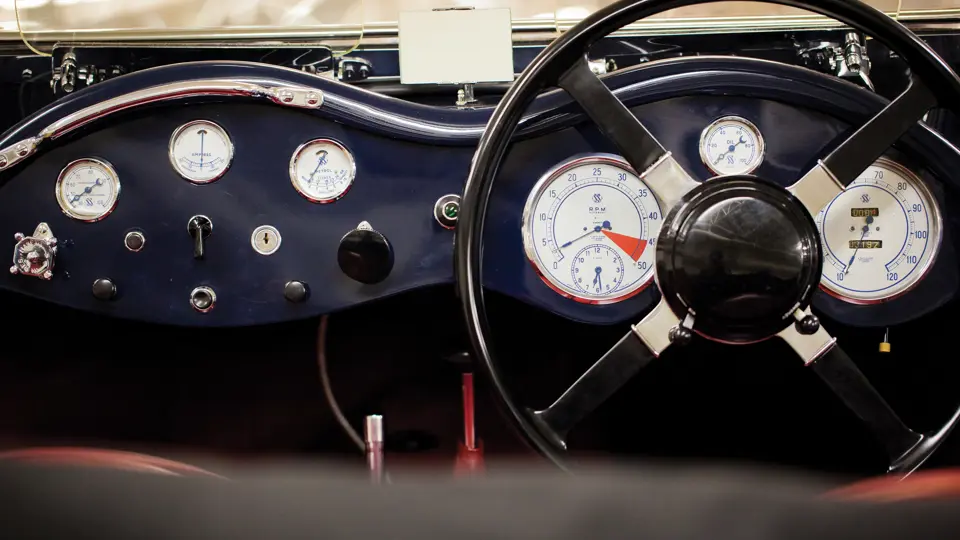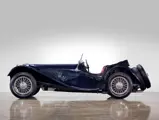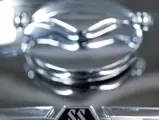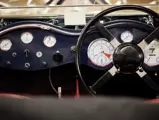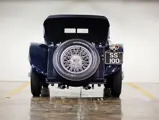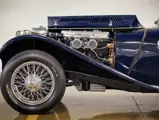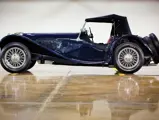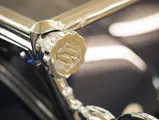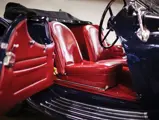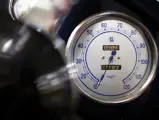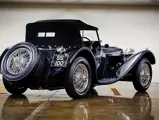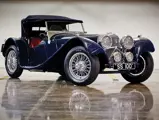125 bhp, 3,485 cc OHV inline six-cylinder engine, twin SU carburetors, four-speed manual gearbox, rigid front and rear axles, front and rear semi-elliptic leaf springs and friction-type shock absorbers, and Girling four-wheel mechanical drum brakes. Wheelbase: 104"
- One of only 118 3.5-Liter examples; rare matching-numbers engine
- Well-known Midwest car since the 1960s; documented in SS100 Register
- A recent concours-level restoration and a former CCCA and AACA award winner
- Eligible for all the finest vintage concours, races, rallies and tours
The Jaguar SS100 was the first of William Lyons’ cars to carry the Jaguar name, although at the time it was just a nameplate and would not become the corporation’s brand name until after World War II. More importantly, the car elevated the parent company from relative obscurity to a purveyor of some of the most stirring sports cars of the entire 20th century.
The SS100’s combination of rakish good looks and sporting performance brought widespread popularity, and orders flowed into Lyons’ Coventry works. Although the car’s credentials were certainly impressive, there were those, Jaguar leaders William Lyons and Bill Heynes prominent among them, who believed more power would make the SS100’s pace measure up to the grace of its handsome styling.
In the case of Jaguar’s great post-WWII sports cars – the XK 120, 140 and 150 – the numerical portion of the name indicated the car’s top speed. The SS100, however, offered a top speed of just 95 mph. Its 0-to-60 mph times were also credible, at 12 to 14 seconds.
It wasn’t enough. Lyons, Heynes and engineer Harry Weslake went back to work on the engine. When the redesign was complete, very little remained of the old Standard Six. The new cylinder bore was increased from 73 mm to 82 mm, and stroke was stretched from 106 mm to 110 mm, expanding displacement from 2,664 cc to 3,485 cc. Valve diameters expanded, connecting rods were made from high-strength steel alloy, and the crankshaft turned in sturdier main bearings. Although the compression ratio was reduced from 7.6:1 to 7.2:1 and the engine’s peak output rpm diminished slightly, the power gain was dramatic – 125 hp versus the 102 of the original 2.5-liter engine. With more power and a new transmission, driveshaft and differential, the new 3.5-liter six was capable of propelling the SS100 to 60 mph in just 10 seconds. A contemporary road test by Autocar reported 10.4 seconds, very brisk performance for the day, and the car was finally capable of topping 100 mph.
The new engine was also offered in SS sedans, but the sports model was the company’s undisputed star. Unveiled at the 1937 London Auto Show, the 3.5-liter SS100 quickly demonstrated its upgraded performance in a variety of competitive venues, including Brooklands, the Alpine Trials and the Welsh, RAC and Monte Carlo Rallies.
In all, 190 2.5 SS100s left the Coventry factory; 3.5-liter production reached 118 cars before the Coventry works was changed over to military work making aircraft components for the war effort.
According to the Classic Jaguar Association SS100 Register, the car offered here, chassis 39048, was delivered new to Lt.-Col. A.W. Tate in England, and it is believed he entered it into a number of amateur-level races. Known history resumes in 1964, when 39048 was imported to the USA by early Jaguar enthusiast Ken Gardner, who commissioned a comprehensive, concours-level restoration. Once complete, the SS100 scored 99.25 points and won the Primary Foreign Class at the July 1970 Indianapolis Grand Classic. That December, Mr. Gardner sold 39048 to Floyd Moore of Glenview, Illinois. Under Mr. Moore in 1972, the SS100 earned an AACA National First Prize.
Moore retained 39048 until 1984, when he sold the car to Chicago’s Bernard Nevoral, and it joined the latter’s private collection of classic sporting cars. Nevoral retained the car for a remarkable 25 years, and during his tenure, the Jaguar was entered into a number of vintage rallies, maintained by knowledgeable specialists and stored within his custom-built garage, which has been profiled in a number of publications.
Most recently in 2010-2011, 39048 received a comprehensive and professional body-off-frame restoration performed by Jeff’s Resurrections of Taylor, Texas. The process included a rebuild of the original, matching-numbers 3.5-liter engine, which has been documented by the Jaguar Heritage Club. As finished in factory-correct blue with rich red leather hides, the car also features gleaming brightwork and such desirable period features as wire-mesh headlamp guards, aero screens, classic-type Dunlop racing tires and a number of motor club badges. In addition, this handsomely presented, rare and immensely desirable SS100 3.5-liter Roadster is accompanied by a remarkable historical file containing all restoration records, copies of prior title documents, older handwritten service records, a Jaguar Daimler Heritage Trust certificate, copies of the SS100 Register and Classic Jaguar Association newsletters, as well as newspaper clippings and SS100-related literature.


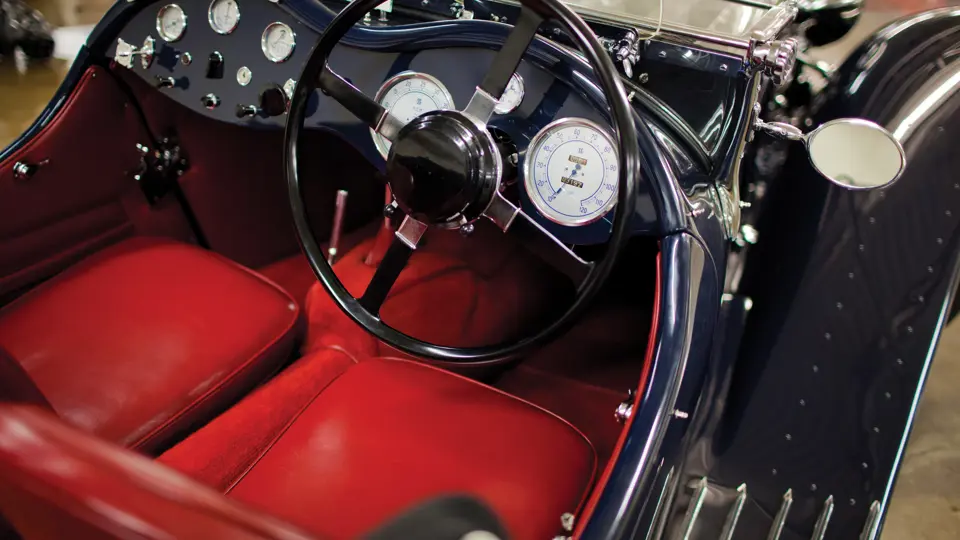

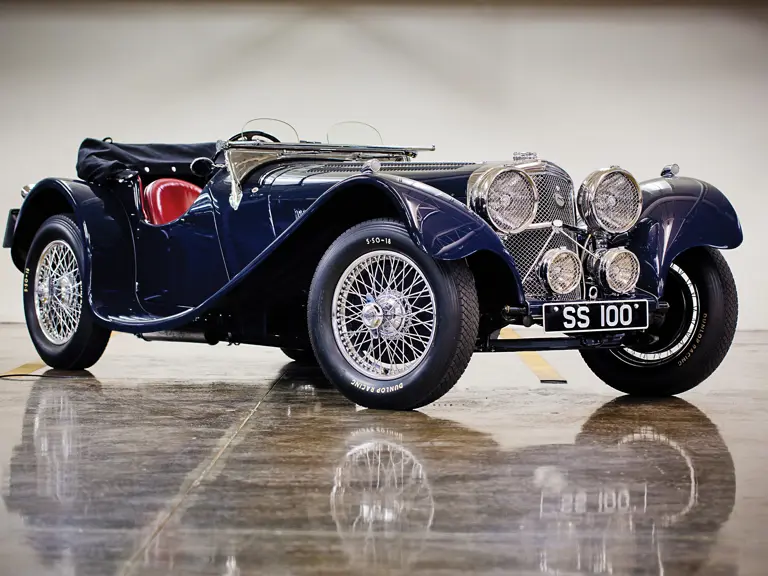
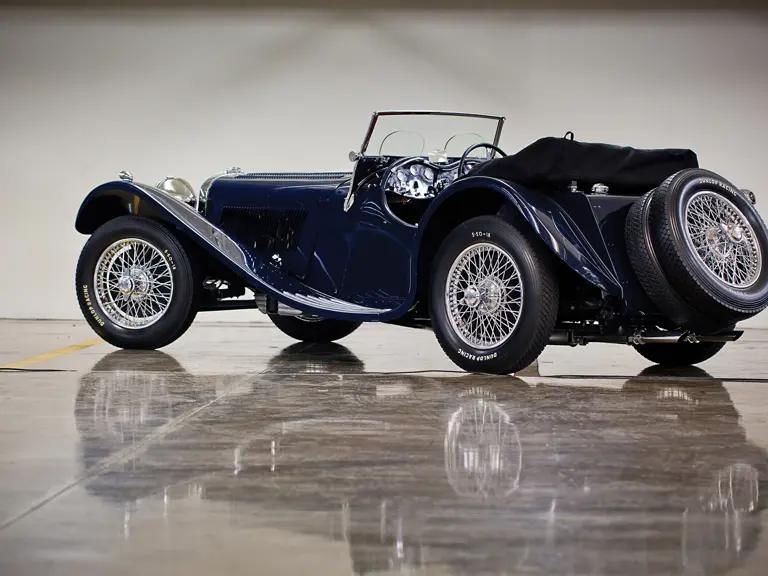

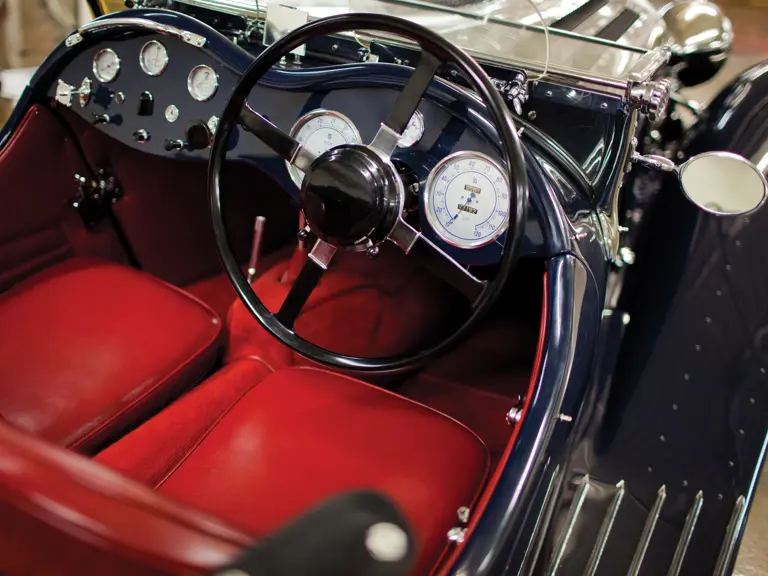
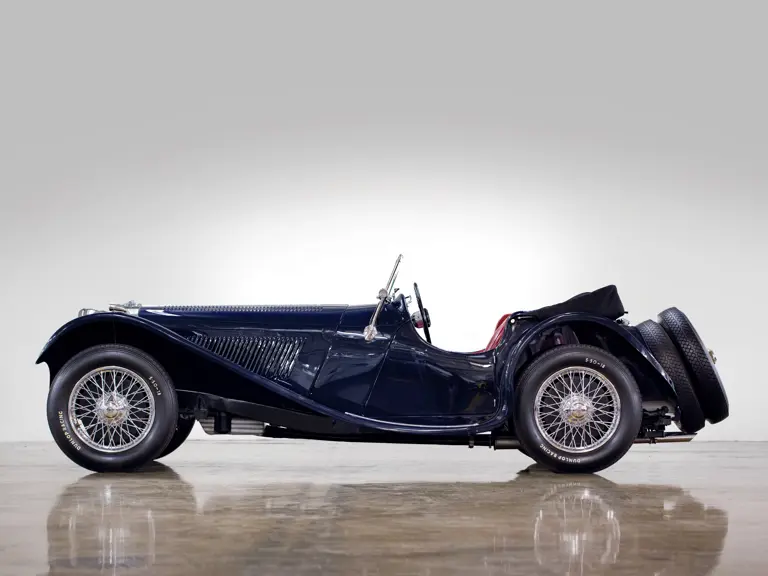
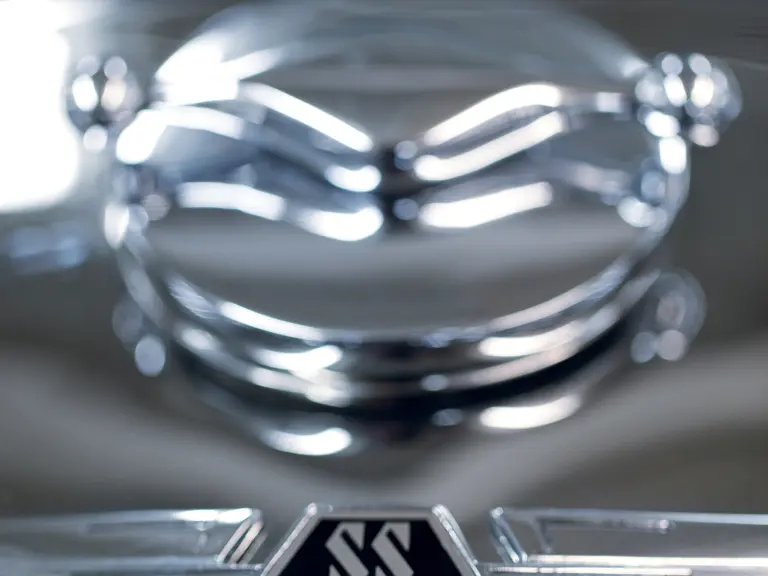


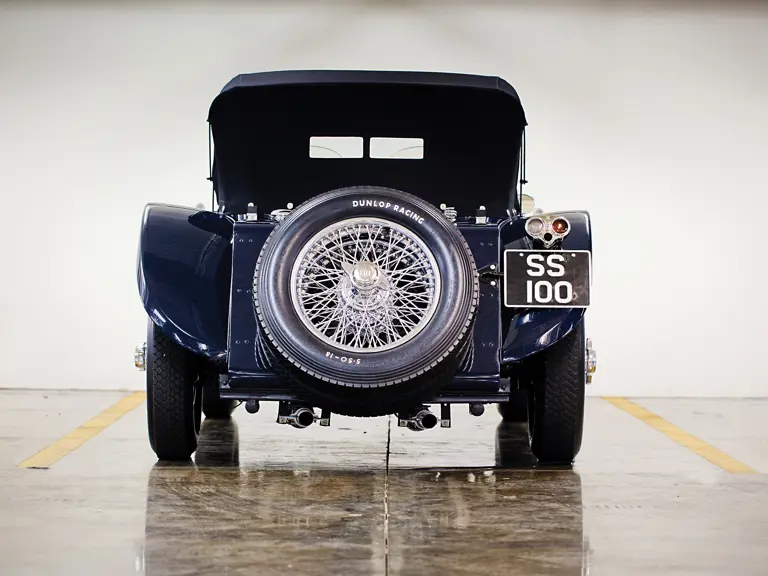
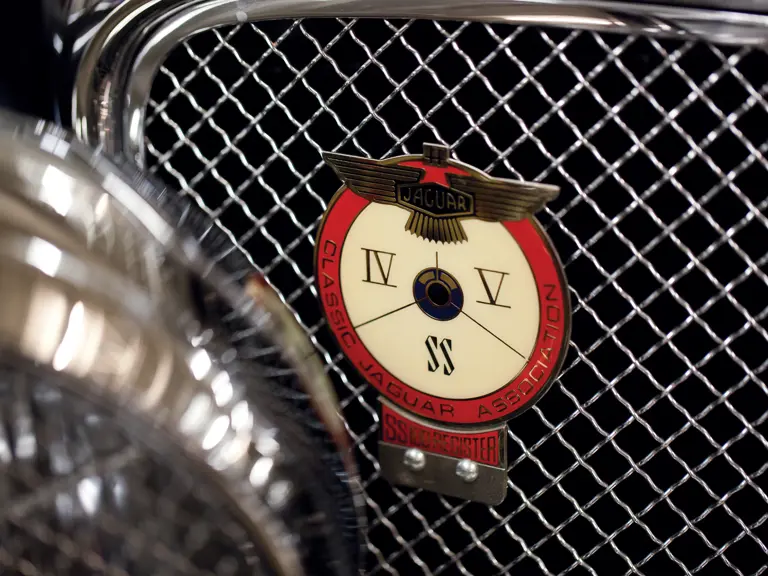
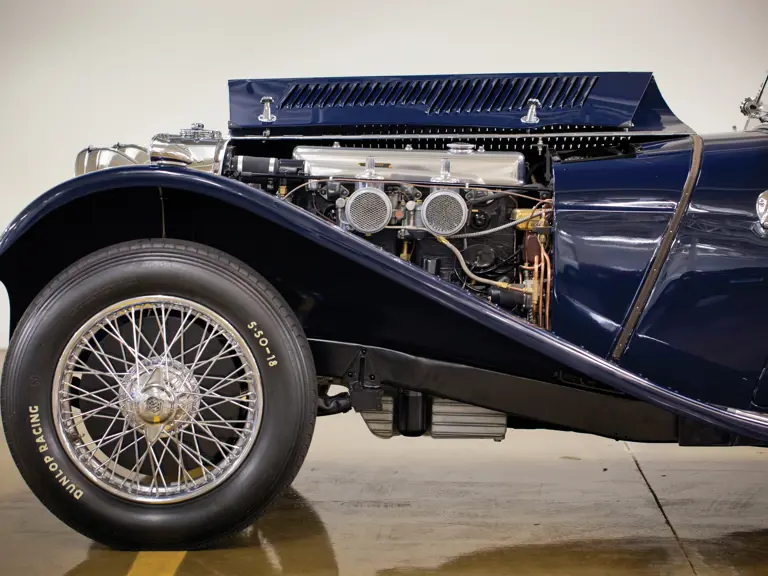
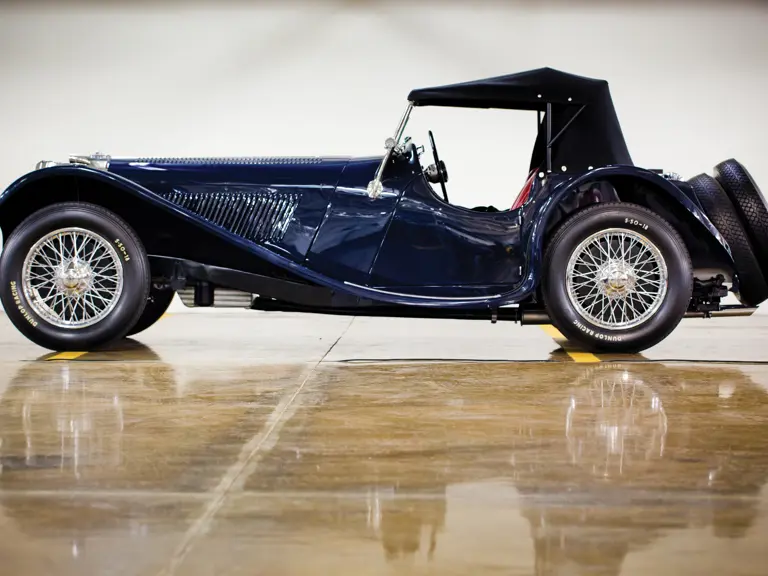
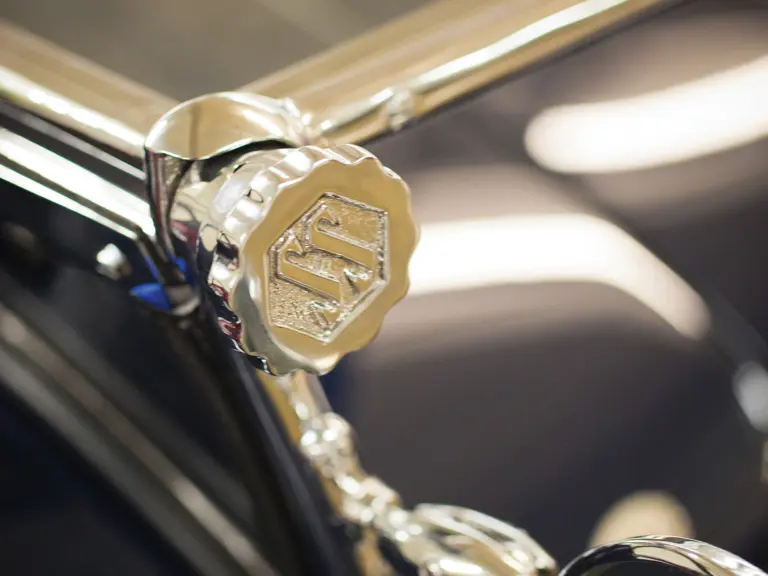
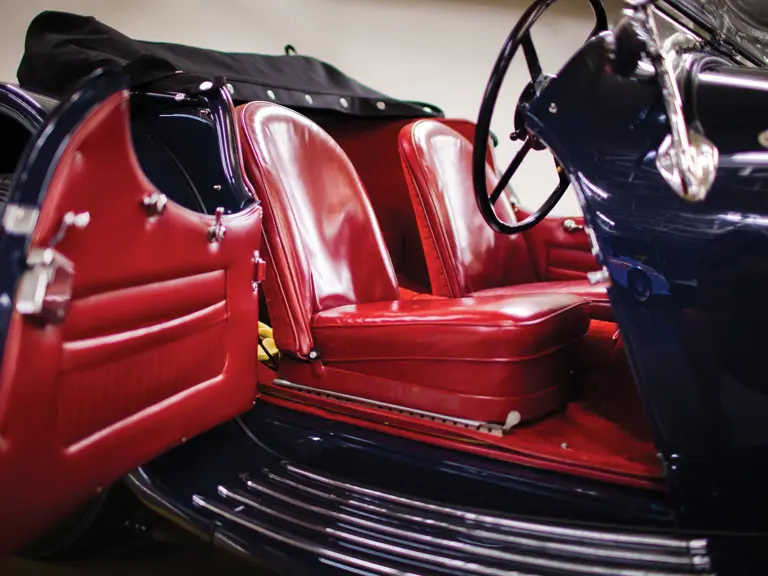
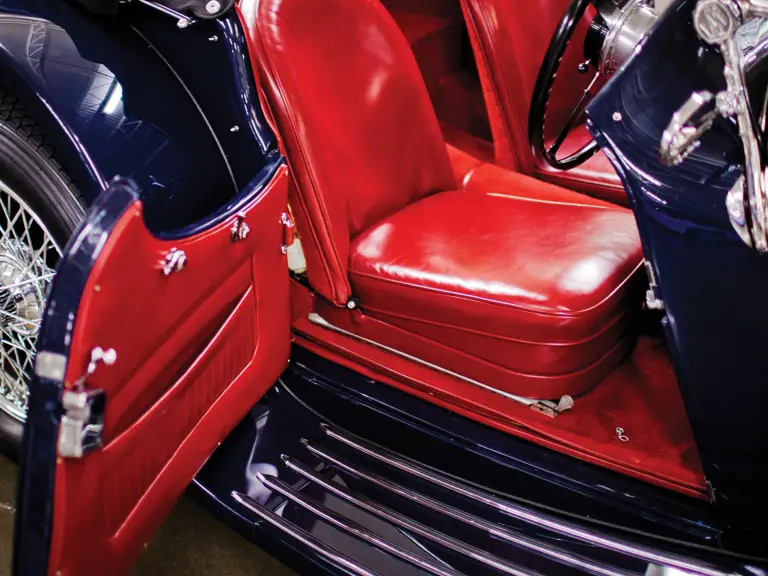

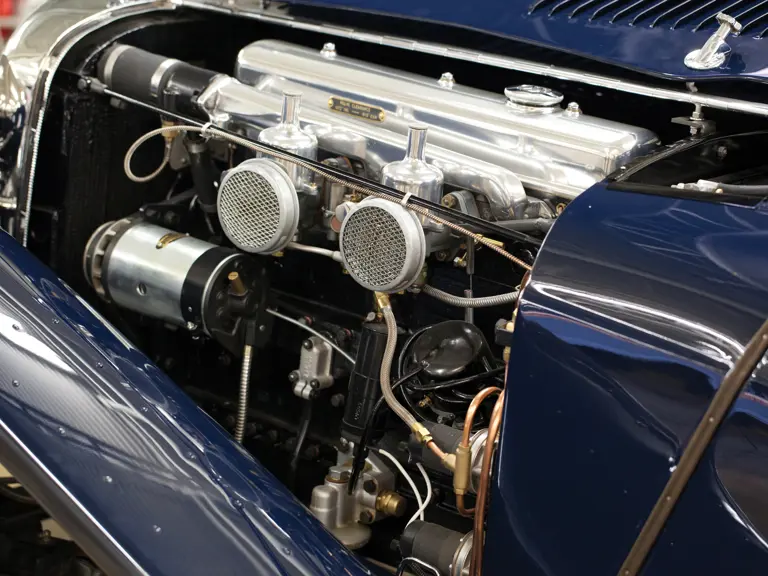
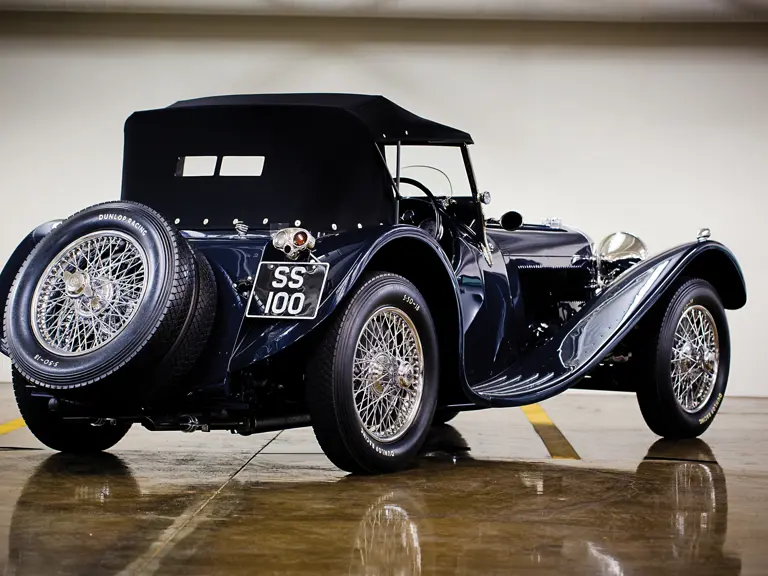
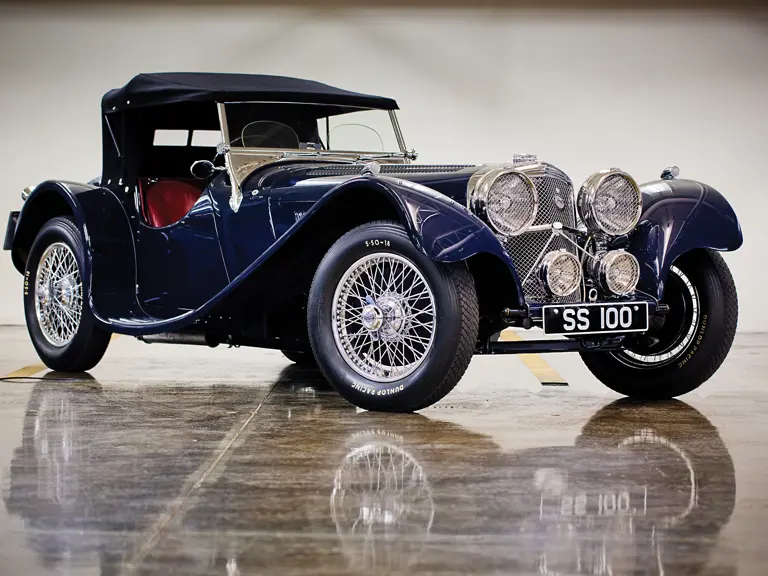
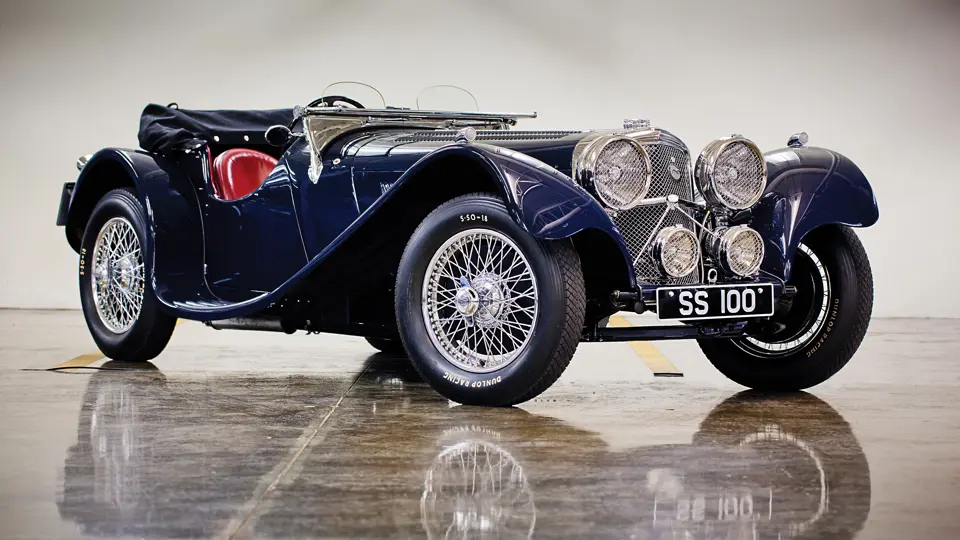
 | Monterey, California
| Monterey, California
